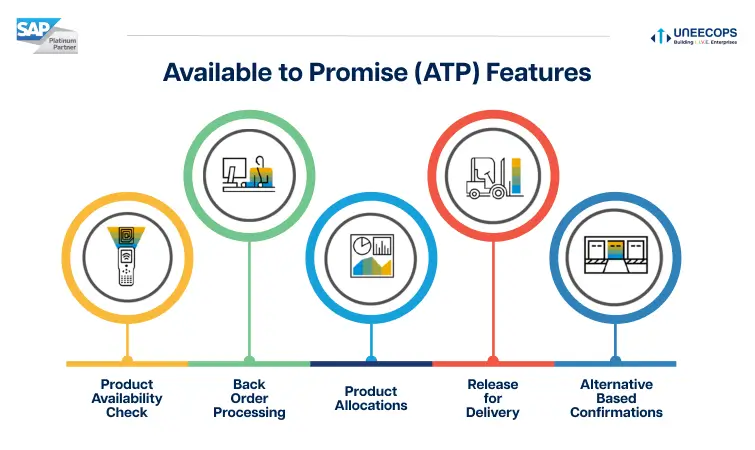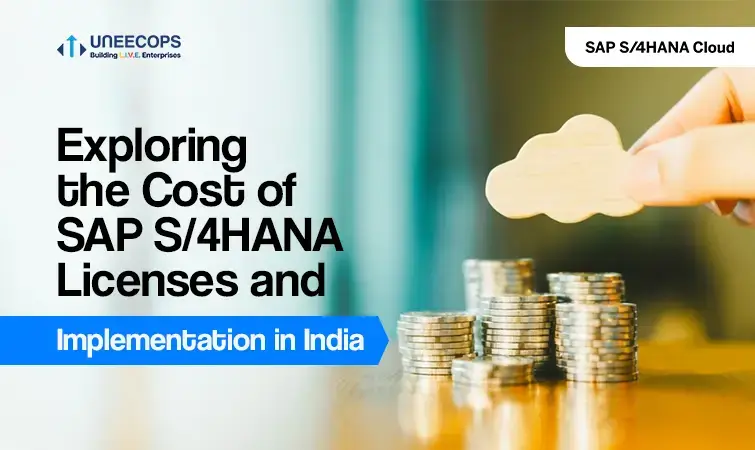The prevailing customer pressures in today’s global market require services and goods to be delivered on time and at lower costs, making it imperative to ensure the proper control of stock. One of the ways that organizations juggle between meeting these twin requirements is the use of SAP Available to Promise (ATP).
With this article, we will understand in depth the fundamentals of SAP ATP.
What is ATP?
Available to Promise (ATP) is a core and main component of inventory management that seeks to find out how many of their products can businesses guarantee to their customers by a certain agreed date. It, in effect, offers an insight into the ‘promise’, because to produce and ship goods without knowing how many orders have been placed risks over-stretching the capacities of production and shipping.
ATP constitutes existing stock, delivers stock, takes consumer orders, and guarantees how much promise can be made to the customers. This is especially important in sectors that usually experience volatile demand as it equips the companies to meet customer requirements without stretching available resources.
In reality, ATP has several roles:
- Managing Customer Expectations: In businesses, providing an exact expected date for delivery increases customer trust and reliability in the business.
- Controlling Inventory levels: Proper statistics on the ATP supply chain aid in ensuring that there are no overstock planes or stockouts. Inventory levels are maintained about actual demand.
- Advancing Production Planning: By knowing what stock is in hand and what is still being awaited, companies can organize production timelines much better.
What Does ATP Stand for in Business?
In the fields of supply chain management and flagship ERP (Enterprise Resource Planning) applications like SAP, the abbreviation ATP is defined as “available to promise”. This term is the amount of stock that is held in inventory and is also free to be promised to customers depending on stock on hand, production plans, and the normal lead time. By making ATP, an organization can promise when and how much product will be available for the customers, which is vital for any business in the present market.
How to Calculate Available to Promise?
This process entails the computation of a figure that may be termed Available to Promise which entails a very good planning process. Here are the main components involved in ATP calculation:
- Current Inventory/Warehouse Stock: This represents the stock in the warehouse which in this instance is available.
- Customer Orders (Outgoing stock): This refers to those orders that have been made and still awaiting the commencement of fulfilment.
- Incoming Supplies/Stock: Any future deliveries of stock to be received on a particular date should be considered.
- Production Orders (Outgoing stock): Companies producing goods are also to take into perspective the production orders that are active and are to be added to the stock.
The basic formula to calculate ATP is
warehouse stock + planned receipts (incoming stock) – planned issues (outgoing stock)
It helps internal departments to utilize the available inventory without incurring any stock-out scenarios at any moment.
SAP ATP Formula
The availability to promise (ATP) capability in the SAP application seems to be an integral part of the application and uses a wider scope of assessing inventory. Amongst other things, SAP ATP is highly sensitive to different parameters and settings configured in the system. These include the availability of determining factors/situations orchestrated by time frames. For example:
- Firstly, for any SAP implementation based on forecasted demand, very limited availability can be offered for periods closer to the current date, and as more dates progress to the future, customers can be assigned more quantities.
- Secondly, for certain products, each may have disparate lead times, production capacity, and turnover days.
- Thirdly, similar to the foregoing, SAP ATP can also be segmented based on order or customer-specific characteristics which is very critical for companies with numerous customers.
In general, an SAP ATP calculation is a multi-stage procedure that encompasses:
- Most importantly, master data like product, and inventory structures which are well configured so as to enhance ATP accuracy.
- Real time updating of parameters, stocks, unsatisfied demand, and new orders which is reflected properly in respective ATP computations.
- implementation of certain rules and parameters for checking into the SAP ATP systems, which helps organizations to meet certain goals of aligning SAP ATP calculations with their strategic objectives.
Conclusion
While ATP is a necessary aspect in the domain of supply chain management, it helps businesses achieve the dual objectives of satisfying customers on the one hand and running operations smoothly on the other. Believing the notion of Available to Promise, its methods of calculation, and the practices of ATP carried out by SAP, one will surely enhance better management of inventory through this principle which will create a positive impact on customer retention and such business accomplishment.
Maximize your supply chain potential with SAP ATP! Contact a Team of SAP Experts to learn how we can help you implement this powerful solution.







